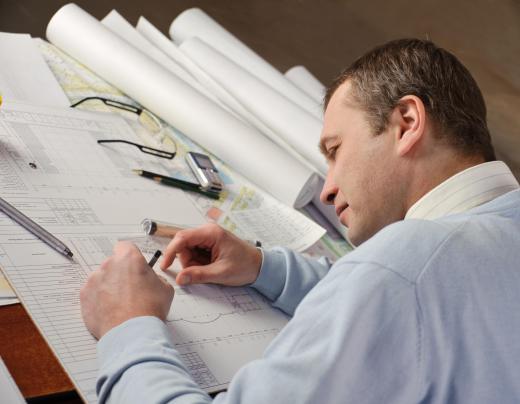A concrete column is simply a round or square column that is made out of concrete. The size, shape, and placement of a column depends on its purpose. In some cases, concrete columns are used just for decoration, while in other cases they are integral to the construction of buildings and and other structures. Concrete is a versatile building material because it can be molded into many sizes and shapes, making it appealing to architects and designers for use in columns.
Sometimes a concrete column is entirely decorative. In these cases, the columns are often etched with designs or patterns or molded to create a certain visual effect. They may be formed in order to reflect the look of columns in historic buildings or buildings from antiquity. These decorative columns may or may not be connected to the structural integrity to the building that they are attached to.

In most cases, however, a concrete column is an important part of the structural integrity of a building. In fact, it is common for a concrete column to carry part of a structural load. This means that the column is used to keep the building from collapsing or shifting in a way that could cause damage to the overall structure. It is quite common for a concrete column to be part of a design for a large building such as an office building, a high rise, a hospital, a prison, and many other types of structures.
One of the benefits of working with concrete is that the product can be used in areas that are on the interior of a building as well as in areas that will be exposed to the elements. For example, a concrete column can be used on the interior of a school building or it can be used to support a highway overpass. Also, as concrete is molded while it is in a liquid form, it can be shaped into many kinds of columns to suit many kinds of building and structural needs. In this manner, it is a unique building material.
The size, shape, and design of a concrete column is often defined by an architect or engineer when a building is in the process of being designed. The physics of the building which takes many factors into account including the pressure that will be put on the building from occupants, the way that the building will be affected by weather, and the way that the building will settle over the years, will define the design of each concrete column in a building. Incorrect calculations can lead to premature cracking or buckling in one or more of the columns in any given structure.
